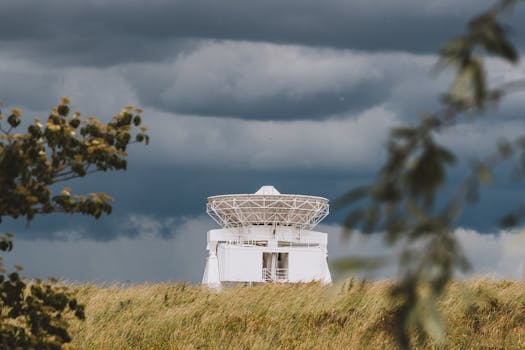
GEO Satellites: Unlocking the Power of Geostationary Orbit
GEO satellites, or Geostationary satellites, are a type of satellite that orbits the Earth at an altitude of approximately 36,000 kilometers, remaining stationary above a fixed point on the equator. This unique orbit allows GEO satellites to maintain a constant view of a specific region, making them ideal for a variety of applications, including television broadcasting, telecommunications, and weather forecasting.
How GEO Satellites Work
GEO satellites are placed in a geostationary orbit, which is a circular orbit that matches the Earth’s rotational period. This means that the satellite completes one orbit around the Earth in exactly 24 hours, allowing it to remain stationary above a fixed point on the equator. The satellite’s altitude and orbital velocity are carefully calculated to ensure that it remains in this orbit, providing a constant view of the region below.
The signals transmitted by GEO satellites are received by earth stations, which are specialized facilities that communicate with the satellite. The earth stations use large antennas to receive and transmit signals to and from the satellite, allowing data to be transmitted over long distances. This makes GEO satellites a crucial part of modern satellite communications, enabling global connectivity and facilitating international communication.
Applications of GEO Satellites
GEO satellites have a wide range of applications, including television broadcasting, telecommunications, and weather forecasting. They are used to transmit television channels, providing entertainment and news to millions of people around the world. They are also used for telecommunications, enabling phone calls, internet access, and other data transmission services.
In addition to these applications, GEO satellites are also used for weather forecasting, providing images of cloud patterns, storm systems, and other weather phenomena. This data is used to predict weather patterns, helping to protect people and property from severe weather events. Other applications of GEO satellites include navigation, where they are used to provide location information and timing signals, and Earth observation, where they are used to study the Earth’s environment and climate.
Benefits and Challenges of GEO Satellites
GEO satellites offer several benefits, including global coverage, high bandwidth, and reliability. They provide a wide range of services, including television broadcasting, telecommunications, and weather forecasting, making them a crucial part of modern satellite communications. However, they also face several challenges, including signal latency, interference, and orbital congestion.
Signal latency occurs because of the long distance between the satellite and the earth station, resulting in a delay of several hundred milliseconds. This can be a problem for applications that require real-time communication, such as video conferencing. Interference occurs when signals from other satellites or sources interfere with the signal transmitted by the GEO satellite, causing errors and loss of data. Orbital congestion occurs when there are too many satellites in the geostationary orbit, causing interference and increasing the risk of collisions.
Future of GEO Satellites
The future of GEO satellites looks bright, with new technologies and innovations being developed to improve their performance and capabilities. One of the most significant developments is the use of high-throughput satellites, which provide higher bandwidth and faster data transmission rates. Another development is the use of advanced propulsion systems, which enable satellites to maintain their orbit and position more efficiently.
In addition to these developments, there is also a growing interest in the use of GEO satellites for new applications, such as satellite-based internet services and Earth observation. These applications have the potential to provide new services and capabilities, enabling global connectivity and facilitating international communication. As the demand for satellite communications continues to grow, GEO satellites will play an increasingly important role in providing global coverage and facilitating international communication.

